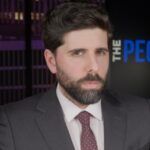
Recently uncovered documents reveal how Monsanto continued producing and selling illegal toxic chemicals eight years after finding out they were deadly to humans.
The unsealed court documents show that PCBs, chemicals commonly used in paint and refrigerators, were mass produced and marketed as Arocolor to the public.
Naturalnews.com reports: The evidence was found in a vast searchable archive that was recently posted by the Bioscience Resource Project in conjunction with the Center for Media and Democracy known as The Poison Papers Project.

BYPASS THE CENSORS
Sign up to get unfiltered news delivered straight to your inbox.
You can unsubscribe any time. By subscribing you agree to our Terms of Use
Among the 20,000-plus internal memos, letters, meeting minutes and other documents obtained through access to documents requests and legal discovery, was a pollution abatement plan from Monsanto dated October 1969. A section labeled “damage to the ecological system by contamination from PCBs” stated: “The evidence proving the persistence of these compounds and their universal presence in the environment is beyond questioning.”
The document goes on to address the possibility of direct lawsuits because “customers using the products have not been officially notified about known effects nor [do] our labels carry this information.”
The Monsanto way: Profits over public health
The paper went on to propose three potential courses of action, along with a flow chart outlining their profit and liability. The choices were “do nothing,” “respond responsibly,” and “discontinue manufacture of all PCBs,” and they ultimately chose profits over public health.
Other documents acknowledged that some fish or animals would be harmed, said that PCBs are “highly toxic” to birds, and suggested that their strategy should be to have the government prove each case against it.
PCBs were eventually banned entirely in 1979 after being linked to serious health problems like liver damage, birth defects and cancer. It was around this time that Monsanto shifted its focus to agriculture, where it continues to mislead and harm the public and the environment.
Washington state, along with West Coast cities such as Portland, Seattle, Oakland, Spokane and San Diego, have filed lawsuits against Monsanto over PCBs. Washington state is seeking damages from Monsanto for negligence, trespass and injury of the state’s natural resources, and failure to warn the public about PCB dangers.
Bob Ferguson, Washington State’s Attorney General, said that his state had more than 600 confirmed or suspected contamination sites including streams, rivers, bays, soil, air, and sediment. The chemicals do not break down easily and can linger in the environment for decades, which is why they can still be found despite being banned nearly 40 years ago.
Ferguson has accused the firm of hiding information about the toxic effects of PCBs, citing an internal memo from 1937 that said animals endured “systemic toxic effects” after inhaling or ingesting PCBs.
Washington’s Assistant Attorney General, Bill Sherman, said that there was information in the Poison Papers archive that the state had not been aware of. He said that if the documents are proven to be authentic, they confirm that Monsanto knew full well that PCBs were dangerous and pervasive and chose to hide that information and sell them anyway.
In May 2016, a jury in Monsanto’s hometown of St. Louis ruled in favor of three plaintiffs with non-Hodgkin’s lymphoma in a lawsuit alleging the firm was negligent in handling PCBs, awarding them nearly $47 million in damages.


